Domeniul Stirbey, Buftea
 In 1850, Barbu Dimitrie Stirbey, ruler (voivode) of Walachia (1849-1853 and 1854-1856), began the building of his palace at Buftea as a stronghold with its two exit tunnels should a quick get-away have been deemed necessary. Such were the times. It was completed by Stirbey's son, Alexandru (1837-1895), in 1863.
In 1850, Barbu Dimitrie Stirbey, ruler (voivode) of Walachia (1849-1853 and 1854-1856), began the building of his palace at Buftea as a stronghold with its two exit tunnels should a quick get-away have been deemed necessary. Such were the times. It was completed by Stirbey's son, Alexandru (1837-1895), in 1863.
But it is Alexandru's son, Barbu (married to Princess Nadèje Bibescu in 1895) who really gave romantic atmosphere to the palace through his gentlemanly escapades and historic adventures and, when I visited Buftea two weeks ago, it was he that I carried in my thoughts as I explored the beautiful grounds, and the parts of the house open to the public (very little, I hasten to add).
Known for his role as 'close confidant and advisor' to King Ferdinand of Romania's wife Queen Marie, this title was actually something of an understatement. King Ferdinand had never been a handsome man and following a serious illness (typhoid), Queen Marie perhaps needed a little more entertainment than he could offer. Prince Stirbey was probably the real father of Marie's youngest child Prince Mircea, who tragically died of typhoid fever aged three at Buftea, and also quite possibly that of Princess Ileana, too.
He was very discrete in his relationship with Queen Marie. As an administrator of the royal domains, he could pretty much come and go as he pleased, until, that is, the Queen's ladies-in-waiting started to gossip.
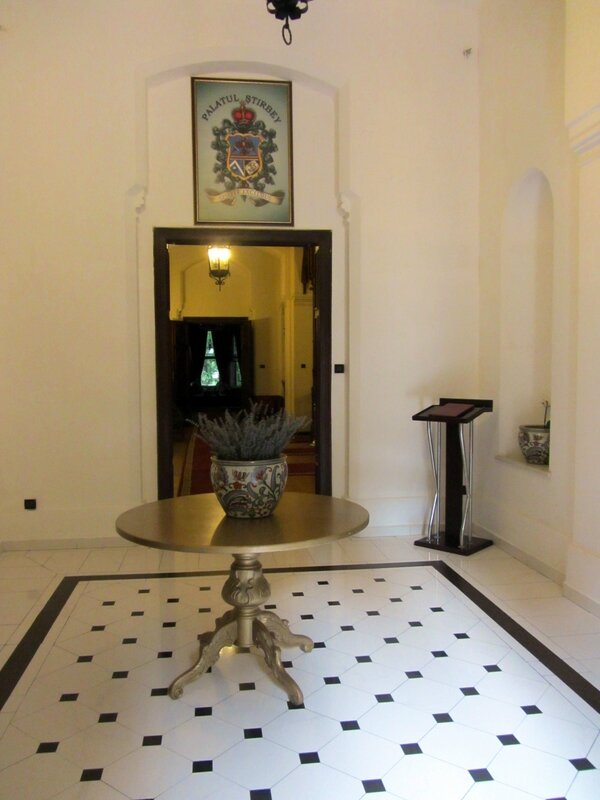 The Stirbey family had a great deal of property, not least the palace on calea Victoriei, the domain in Buftea and a third in Brasov which was sold off by the family's descendants to an Asphalt Bigshot several years ago. Barbu was certainly a very enterprising catch. Well mannered, good looking, an excelent businessman - a gentleman of his era. He was even Prime Minister of Romania albeit briefly, in 1927.
The Stirbey family had a great deal of property, not least the palace on calea Victoriei, the domain in Buftea and a third in Brasov which was sold off by the family's descendants to an Asphalt Bigshot several years ago. Barbu was certainly a very enterprising catch. Well mannered, good looking, an excelent businessman - a gentleman of his era. He was even Prime Minister of Romania albeit briefly, in 1927.
During WW1 the palace became a temporary home for Queen Marie and her children and, as a result, was bombed by German planes. The Ştirbey family, Queen Marie along with Carol I and the government all retreated to Iasi, leaving the palace at the mercy of the German army who looted and took possession of it. The German Military Commandment settled in Buftea in January 1917.
On March 5th, 1918, the Austro-Hungarian and German peace agreement was signed at the palace. Time passed, the German troops were defeated and the Știrbey family finally returned home to Buftea. Restoration was carried out to repair the devastation caused by the bombing. Between 1930 and 1940, Barbu Știrbey was forced to leave Romania for exile in Switzerland, but when he returned, he was part of the delegation that signed the Armistice of Moscow on September 12th, 1944.
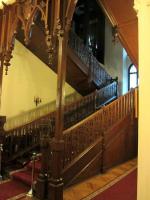
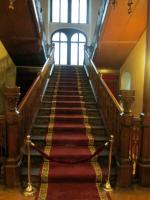 He died under mysterious circumstances in 1946 after attending a reception at the Russian embassy in Bucharest, outliving Queen Marie by eight years.
He died under mysterious circumstances in 1946 after attending a reception at the Russian embassy in Bucharest, outliving Queen Marie by eight years.
So, you see, the aura of such a personality really made Domeniul Stirbey a tour of the imagination as far as I was concerned. For me, Barbu Stirbey was Buftea and vice versa.
The palace and everything in it were confiscated by the communist government, as you would well presume. Between 1949-1952, it was abandoned. Restored twice more - once in 1959, with the aim of transforming it into a diplomatic residence and again after the earthquake of 1977, it became a hotel in 1990 and the park opened to the public.
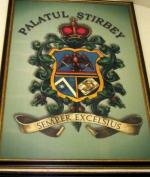 Built in Gothic style (more evident inside than out) with a Swiss châlet in mind, the palace interiors are richly decorated with vast carved wooden sections, with a magnificent interior staircase sculpted in oak and bearing the family coat of arms as the centre piece giving the atmosphere of a chic hunting lodge. The painted and/or sculpted wooden ceilings, the Neo-Gothic blazons above the doorways, very well-preserved original windows and doors with their wooden frames and oak gothic-like detail and the enormous white Carrara marble fireplace you can stand up in are all visitable on the ground floor and give wonderful insight into how it must have been in its heyday. It is not difficult to conjure up visions of parties, balls and dinners, ladies in their gowns, an orchestra over there perhaps... It really is a superb example of romantic architecture.
Built in Gothic style (more evident inside than out) with a Swiss châlet in mind, the palace interiors are richly decorated with vast carved wooden sections, with a magnificent interior staircase sculpted in oak and bearing the family coat of arms as the centre piece giving the atmosphere of a chic hunting lodge. The painted and/or sculpted wooden ceilings, the Neo-Gothic blazons above the doorways, very well-preserved original windows and doors with their wooden frames and oak gothic-like detail and the enormous white Carrara marble fireplace you can stand up in are all visitable on the ground floor and give wonderful insight into how it must have been in its heyday. It is not difficult to conjure up visions of parties, balls and dinners, ladies in their gowns, an orchestra over there perhaps... It really is a superb example of romantic architecture.


 The surrounding park is full to the brim with heady gingko, magnolia and cypress trees, and huge oaks that date back more than 500 years. It was our Barbu, a passionate agriculturist, who founded the huge farm nearby having purchased neighbouring parcels of land.
The surrounding park is full to the brim with heady gingko, magnolia and cypress trees, and huge oaks that date back more than 500 years. It was our Barbu, a passionate agriculturist, who founded the huge farm nearby having purchased neighbouring parcels of land.
The chapel with murals by neoclassic artist Gheorghe Tatarescu (a family relative) remains the final resting place of Voivode Barbu Știrbey and his wife Elisabeta, their son Alexandru Știrbey and his wife Maria, their son (our) Prince Barbu Alexandru Știrbey and other family members.
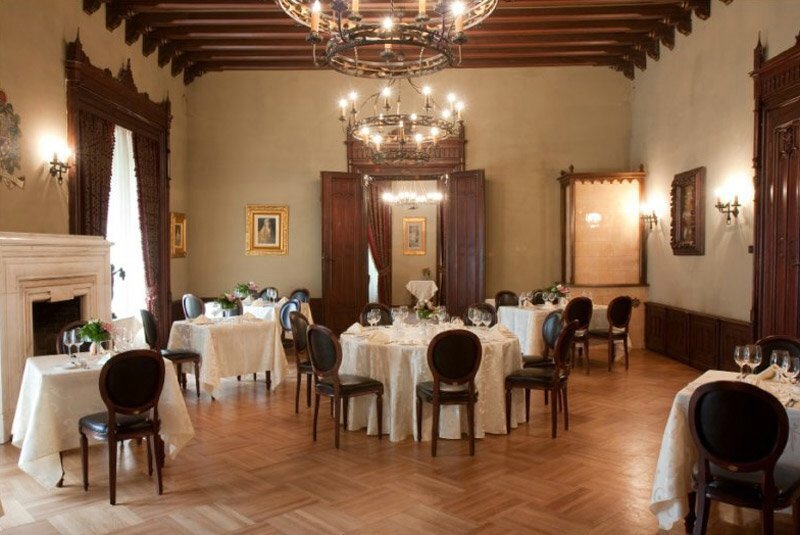 (Photo source) The former owners regained the property after 1990 following a long restitution battle and in 2007, a consortium of Romanian investors, Bucharest Arena, purchased it from the Stirbey descendants for nine million euros. At huge cost (at least 30 million euros is rumoured), the palace has been renovated once again and is today a restaurant and private events venue, popular for weddings and parties. It is a great pity that the rest of this beautiful house is out of bounds and cannot be visited in its entirety, for its architectural value alone is very much part of Romania's patrimonial heartbeat.
(Photo source) The former owners regained the property after 1990 following a long restitution battle and in 2007, a consortium of Romanian investors, Bucharest Arena, purchased it from the Stirbey descendants for nine million euros. At huge cost (at least 30 million euros is rumoured), the palace has been renovated once again and is today a restaurant and private events venue, popular for weddings and parties. It is a great pity that the rest of this beautiful house is out of bounds and cannot be visited in its entirety, for its architectural value alone is very much part of Romania's patrimonial heartbeat.
Palatul Stirbey: Str. Stirbey Voda 36, Buftea 070000, ILFOV / Phone: +(40)0730708828
Photos by Sarah In Romania unless otherwise indicated. Please ask before borrowing or hyperlink back here. Thank you!

/https%3A%2F%2Fstorage.canalblog.com%2F03%2F12%2F353913%2F41915630_o.jpg)
/https%3A%2F%2Fstorage.canalblog.com%2F15%2F06%2F353913%2F41915331_o.jpg)
/https%3A%2F%2Fstorage.canalblog.com%2F03%2F68%2F353913%2F41914713_o.jpg)
/https%3A%2F%2Fstorage.canalblog.com%2F22%2F12%2F353913%2F29890995_o.jpg)
/https%3A%2F%2Fstorage.canalblog.com%2F68%2F41%2F353913%2F29890862_o.jpg)


/https%3A%2F%2Fstorage.canalblog.com%2F08%2F12%2F353913%2F116988178_o.jpg)
/https%3A%2F%2Fstorage.canalblog.com%2F59%2F38%2F353913%2F115811794_o.jpg)
/https%3A%2F%2Fstorage.canalblog.com%2F00%2F54%2F353913%2F113969303_o.jpg)
/http%3A%2F%2Fp8.storage.canalblog.com%2F81%2F17%2F353913%2F59684501_p.jpg)